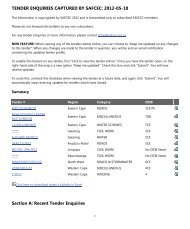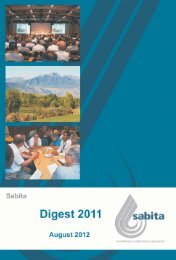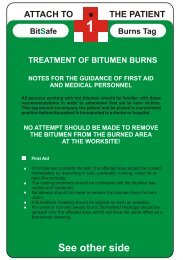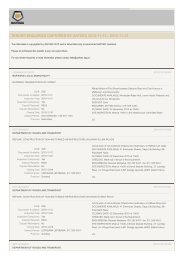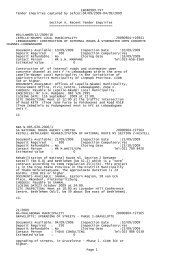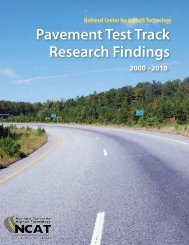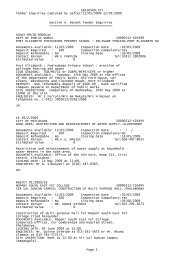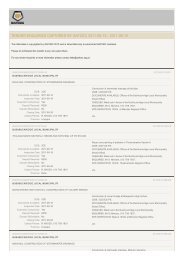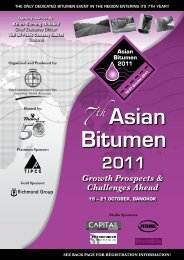DIGEST 2006 - Sabita
DIGEST 2006 - Sabita
DIGEST 2006 - Sabita
You also want an ePaper? Increase the reach of your titles
YUMPU automatically turns print PDFs into web optimized ePapers that Google loves.
double that for two-lane<br />
surfaced roads, and the<br />
composition of fatalities<br />
among accidents on gravel<br />
(10.9%) is higher than on<br />
2-lane paved roads (7.8%),<br />
and much higher than on<br />
full-speed freeways (3.2%).<br />
Thus effects of differences in<br />
vehicle control strongly<br />
appear to swamp differences<br />
in driving speed where<br />
accident harm is concerned;<br />
• Gravel roads<br />
cannot, like<br />
bituminous ones,<br />
be constructed<br />
and maintained<br />
entirely using<br />
small equipment<br />
that can be<br />
operated by<br />
unskilled people;<br />
thus they fail to take into<br />
account SA’s abundance of<br />
underutilised labour, and are<br />
less effective at developing<br />
human capital in small<br />
contractors. National<br />
Government’s Extended<br />
Public Works Programme<br />
(EPWP) mandates that<br />
wherever labour-intensive<br />
methods can be deployed for<br />
the same budget outlay as<br />
capital-intensive methods,<br />
the former should be<br />
favoured. In fact this is too<br />
conservative, using an<br />
accounting measure of value<br />
where an economic measure<br />
would be more appropriate.<br />
Use of small contractors in<br />
road construction and<br />
maintenance builds human<br />
capital in the form of<br />
management, tendering and<br />
investment skills, with the<br />
acquisition of manually<br />
operated surfacing equipment<br />
an additional benefit. Since<br />
such capital is an economic<br />
asset with future multipliers,<br />
we should not implicitly set<br />
our willingness to invest in it<br />
at zero, as the EPWP<br />
presently does.<br />
It is unfortunately not possible<br />
here to attempt a quantitative<br />
estimate of the<br />
human capital<br />
investment value<br />
accruing to<br />
surfaced road<br />
construction and<br />
maintenance over<br />
gravel road<br />
construction and<br />
maintenance. The<br />
issue has been<br />
confused in many discussions by<br />
benchmarking targets of ‘numbers<br />
of jobs’.<br />
.... capital is<br />
an economic<br />
asset with<br />
future<br />
multipliers<br />
Unlike human capital, ‘jobs’ are<br />
not assets since they are functions<br />
of overall productivity in the<br />
economy, are not fixed in extent,<br />
and do not have opportunity costs<br />
in the strict sense.<br />
Over the coming year, I and my<br />
graduate students at UCT hope to<br />
make progress against this<br />
confusion and produce a first<br />
quantitative estimate of the<br />
potential value in human capital<br />
creation of labour-intensive<br />
roadwork. In the meantime, we<br />
must be content with noting that<br />
whatever effect this has on the<br />
shadow price of gravel, the<br />
direction of the influence is clear<br />
and must further reduce the<br />
23



